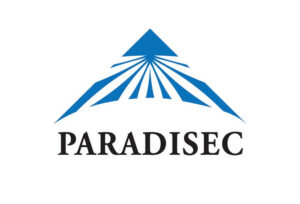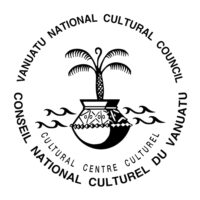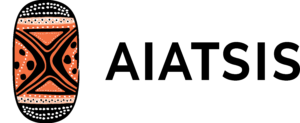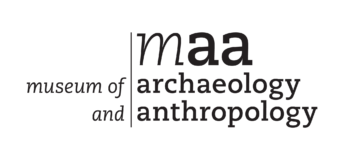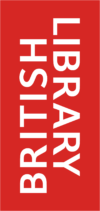The True Echoes research project started in July 2019, having received funding from the Leverhulme Trust and the Department for Business, Energy and Industrial Strategy (BEIS).
The project is led by the British Library, and the team there comprises Isobel Clouter, Principal Investigator, and Research Fellows Vicky Barnecutt and Rebekah Hayes.
Amanda Harris, Director of the Pacific and Regional Archive for Digital Sources in Endangered Cultures (PARADISEC) Sydney Unit, and Don Niles, Director of the Institute of Papua New Guinea Studies (IPNGS), are Co-Investigators on the project.
If you have a question or would like to know more about True Echoes, please get in touch via email, or at the following postal address:
Sound Archive, The British Library
96 Euston Road, London, NW1 2DB, United Kingdom
The research has been carried out with partner institutions in Australia and the Pacific:
IPNGS: Don Niles, Gedisa Jacob (Senior Research Officer, Music Division)
PARADISEC: Amanda Harris, Steven Gagau (Cultural Researcher)
Vanuatu Cultural Centre: Richard Shing (former Director), Ambong Thompson (Manager of the National Film, Sound and Photo Unit)
Solomon Islands National Museum: Tony Heorake (Director), Lawrence Kiko (Deputy Director).
Australian Institute of Aboriginal and Torres Strait Islander Studies (AIATSIS): Lara McLellan (Assistant Director, International Engagement), Grace Koch (Honorary Visiting Researcher at the Australian National University and History Researcher, True Echoes).
The researchers also worked with the British Museum and the Museum of Archaeology and Anthropology, Cambridge, and many other academics, archivists, museum curators, researchers, and members of source communities.
Partners
Institute of Papua New Guinea Studies
Founded one year before Independence in 1974, the Institute of Papua New Guinea Studies (IPNGS) is a national cultural institution that researches, documents, archives, and promotes Papua New Guinea cultures, with a focus on music/dance, ethnology, and literature. While the primary focus is on traditional expressions of culture, attention is also given to more recently developed expressions, such as those performed in church, town, military displays, etc.
The IPNGS Music Archive aims to reflect all music/dance-related research that has been done in Papua New Guinea and includes around 12,000 hours of recordings on reels, cassettes and discs, as well as films, photos, and published and unpublished printed works.
PARADISEC is a digital archive of records of some of the many small cultures and languages of the world. PARADISEC works to safely preserve materials that would otherwise be lost and their collection represents over 1,200 languages.
Founded in 2003, PARADISEC is a consortium made up of the University of Sydney, the University of Melbourne and the Australian National University. PARADISEC has established a framework for accessioning, cataloguing and digitising audio, text and visual material, and preserving digital copies. A primary goal is to safely preserve material that would otherwise be lost. In this way PARADISEC can make field recordings available to the people and communities recorded, and to their descendants.
Their research group has developed models to ensure that the archive can provide access to interested communities, and conforms to emerging international standards for digital archiving. PARADISEC also work with cultural centres in the Pacific to support the management and digitisation of their own collections.
The Vanuatu Cultural Centre assists with the preservation, protection and promotion of Vanuatu’s tangible and intangible cultural heritage. Since its inception, the Vanuatu Cultural Centre has played a major role in the documentation of traditional knowledge and artefacts, the surveying of cultural and historical sites, and the discovery of significant archaeological sites.
The National Film, Sound and Photo archive at VCC was established in the 1960s and is responsible for collecting, preserving and promoting the cultural collections of film, photo and audio recordings.
Solomon Islands National Museum
The Solomon Islands National Museum, established in 1969, preserves, protects and promotes local customs and traditions. By working closely with local communities, the museum is increasing its capacity to research and manage cultural and natural heritage, encourage economic development through cultural enterprise, and to promote peace through respect of culture. The Museum is also enhancing its cultural infrastructure to increase its capacity for storing, conserving and exhibiting Solomon Islands’ cultural and historical artefacts.
The Museum collects artefacts and conducts documentary research into culturally important sites around the country under the National Site Survey programme and in collaboration with visiting archaeologists. These programmes enhance the development of both the SINM and Solomon Islands, and encourage a better understanding of the people, culture and environment of Solomon Islands.
The Australian Institute of Aboriginal and Torres Strait Islander Studies is a research, collections and publishing organisation, which promotes knowledge and understanding of Aboriginal and Torres Strait Islander cultures, traditions, languages and stories, past and present. AIATSIS has a growing collection of over one million items, including films, photographs, audio recordings, art and artefacts, as well as printed and other resource materials. These collections are both culturally significant and an important resource for anybody looking to improve their knowledge of Aboriginal and Torres Strait Islander history and culture.
AIATSIS also conducts community-based research in a variety of sectors, including languages, health, native title, and education. AIATSIS, originally established by an Act of the Parliament of Australia in 1964 as the Australian Institute of Aboriginal Studies, was reconstituted in 1989 as AIATSIS. It is based in Canberra, Australia.
The Museum of Archaeology and Anthropology (MAA) at the University of Cambridge was founded in 1884. It has one of the most important collections of its kind in the UK. Its collections span nearly two million years of human history, from the stone tools of Olduvai Gorge to contemporary art. The museum is particularly noted for its Pacific collections, which include material from eighteenth century voyages of Captain James Cook and other early British explorers, the Museum’s founding collections from Fiji, and the pioneering anthropological fieldwork of Alfred Haddon and the 1898 Cambridge Expedition to the Torres Strait and New Guinea.
MAA is committed to collaborative research to better understand and present the complex and often difficult colonial histories associated with its collections. The museum is particularly known for its work with originating communities and its innovative exhibitions which draw contemporary artists into dialogue with the historic collections.
The British Museum was founded in 1753 and opened its doors in 1759. It was the first national museum to cover all fields of human knowledge, open to visitors from across the world. The British Museum brings together the cultures of the world under one roof. Its 8 million objects allow us to explore the extraordinary diversity of human cultures, from small communities to vast empires, to discover the many forms and expressions human beings have given to every aspect of life, and to realise how closely they are interconnected.
The Museum’s aim is to hold a collection representative of world cultures and to ensure that the collection is housed in safety, conserved, curated, researched and exhibited.
The British Library is the national library of the United Kingdom and one of the world’s greatest research libraries. It provides world class information services to the academic, business, research and scientific communities and offers unparalleled access to the world’s largest and most comprehensive research collection.
The Library’s collection has developed over 250 years and exceeds 150 million separate items representing every age of written civilisation and includes books, journals, manuscripts, maps, stamps, music, patents, photographs, newspapers and sound recordings in all written and spoken languages.





